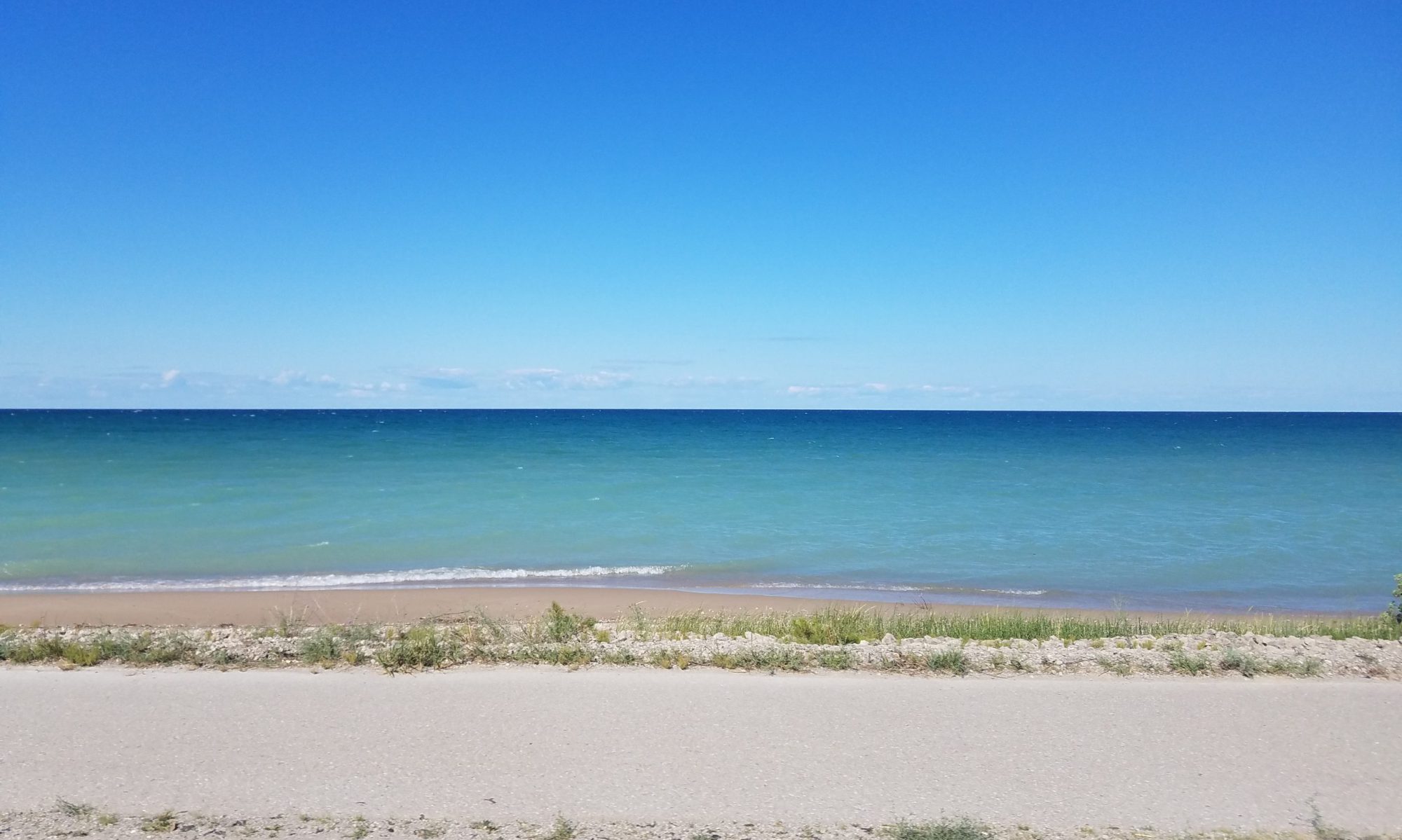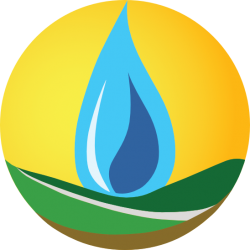As featured on the Geology Department’s News page, a team of our researchers were out measuring the flow and water quality of 64 streams that drain 80% of the Lower Peninsula into the Great Lakes.
Abstracts are invited for “NovCare2011”
Abstracts are invited for “NovCare2011″: Novel Methods for Subsurface Characterization and Monitoring – From Theory to Practice” co-organized by the hydrogeology group http://www.novcare.org.
Hydrogeology Group Awarded NSF Grant
The Hydrogeology Group has been awarded with a $1.2M NSF grant to predict sustainable solutions for communities across the High Plains that rely upon a diminishing water supply. Read more: http://news.msu.edu/story/8467/
Mine Dogan
Research Interests
My research areas are electrical and electromagnetic methods of geophysics and their applications on hydrogeophysics, archaeogeophysics, environmental geophysics. My Ph.D. thesis research focuses on characterization of a highly heterogeneous aquifer using novel characterization methods such as full-resolution 3D GPR and DPP hydraulic conductivity tool. My other research interests are data processing, numerical solutions, modeling, and simulation since I personally like advanced math and coding in Matlab. For more information see my personal website.
Education
- Ph.D. candidate, 2007-2008, Istanbul Technical University, Geophysical Engineering
- M.S., 2007, Istanbul Technical University, Geophysical Engineering
- B.S., 2003, Istanbul Technical University, Geophysical Engineering
Recent Abstracts
- Dogan, M., Mark M. Meerschaert, David W. Hyndman, Remke L. Van Dam, Geoffrey C. Bohling, Gaisheng Liu, James J. Butler Jr., 2011, Fractal Stochastic K Field Generation Based on Direct-Push and GPR Data, NovCare, Cape Cod, MA, U.S.A.
- Hyndman, D. W., Dogan, M., Bohling, G. C., van Dam, R. L., Liu, G., Butler, J. J. Jr., 2010, Integration of high-resolution GPR and direct-push methods: Subsurface imaging of the highly heterogeneous MADE site (invited), AGU Fall Meeting, Abstract H24E-01, San Francisco, U.S.A.
- Dogan, M., van Dam, R. L., Hyndman, D. W., Butler, J. J. Jr., and Bohling, G. C., 2010, Full-resolution 3D GPR and direct-push K data reveal distinct hydrostratigraphic zones at the MADE site, AGU Fall Meeting, San Francisco, U.S.A.
- Dogan, M., Hyndman, D.W., van Dam, R. L., and Butler, J. J. Jr., 2009, Hydrostratigraphic analysis of the MADE site using full-resolution 3D GPR and direct-push K data, AGU Fall Meeting, San Francisco, U.S.A.
- Dogan, M., Hyndman, D. W., and van Dam, R. L., 2009, Geophysical methods to characterize a highly heterogeneous aquifer, NovCare, Leipzig, Germany.
Publications
- Doğan, M., R. L. Van Dam, G. C. Bohling, J. J. Butler Jr., and D. W. Hyndman, 2011, Hydrostratigraphic analysis of the MADE site with full-resolution GPR and direct-push hydraulic profiling, Geophys. Res. Lett., 38, L06405, doi:10.1029/2010GL046439.
- Doğan, M., 2007, Very Low Frequency Electromagnetic Method (VLF-EM) Interactive Data Processing and Interpretation Package: VLFINTERP, M.Sc. Thesis, Istanbul Technical University, Institute of Science and Technology, 87 p.
- Doğan, M., Özürlan, G., 2006. Availability of VLF-Electromagnetic Method for the Exploration of Geothermal Fields; Demirci Case, The 1st International Geothermal Congress (UCEAT) and Exhibition of Turkey, Oral presentation, Abstract book: pp 53-54, 21-24 November 2007, MTA Cultural Center, Ankara, Turkey.
- Doğan, M., Özürlan, G., 2006. Very Low Frequency Electromagnetic Method (VLF-EM) Interactive Data Processing and Interpretation Package: VLFINTERP, The 17th International Geophysical Congress and Exhibition of Turkey, Poster presentation, Abstract book: pp 49, 14-17 November 2006, MTA Kültür Sitesi, Ankara, Turkey.
- Doğan, M., 2006. Geophysical Methods for the Exploration of Mines, Poster presentation, Mining Turkey 2006 Fair, Istanbul, Turkey.
Bobby Chrisman
 Research Interests
Research Interests
My interests include geophysics and hydrogeology with an application to engineering and environmental issues. Current work includes the development of a field data database and an analysis of soil moisture and temperature variability in the shallow subsurface. I will pursue an advanced degree in either hydrogeology or hydrogeophysics in Fall 2011.
Education
B.S. Geological Sciences, Concentration in Geophysics, Michigan State University, May 2011.
SAGE – Summer of Applied Geophysical Experience 2010, Los Alamos, NM.
Study Abroad – Ecology of the Mountains 2010, Lesser Himalayas, India.
Contact Info
bbchrisman@gmail.com
chrisma8@msu.edu
Sherry Martin
 Research Interests
Research Interests
I take an interdisciplinary approach in researching issues related to water quality and quantity. More specifically, I use the principles of landscape ecology together with biogeochemistry and systems modeling to investigate ecosystem services in a changing landscape. My current research evaluates temporal shifts in coupled human and natural systems. To this end, I am using both multivariate statistical techniques and mechanistic models to investigate the role of historical land use/cover in driving physical, chemical, and biological characteristic currently observed in lake, stream, and wetland ecosystems.
Overall, my goal is to conduct research for the purpose of guiding ecosystem management, with ecosystem type unconstrained by salinity or water residence time. One line of research which I plan on pursuing is the concept of land use/cover legacies.
Education
- Ph.D. Fisheries and Wildlife and Ecology, Evolutionary Biology, and Behavior, Michigan State University, East Lansing, MI. 2010. Dissertation Title: Understanding variation in lake water chemistry over space and time. Advisor: Daniel Hayes
- M.S. Fisheries and Wildlife, Michigan State University, East Lansing, MI. 2004. Thesis Title: Defining lake landscape position: relationships to hydrologic connectivity and landscape features. Advisor: Patricia Soranno
- B.A. Biology, with Political Science minor, Wittenberg University, Springfield, OH. 1995.
Recent Publications
- Nshimyimana JP, S.L. Martin, M. Flood, M.P. Verhougstraete, D.W. Hyndman, and J.B. Rose. 2018. Regional Variations of Bovine and Porcine Fecal Pollution as a Function of Landscape, Nutrient, and Hydrological Factors. Journal of Environmental Quality 47(5): 1024-1032.
- Martin, S.L., D.B. Hayes, A.D. Kendall, and D.W. Hyndman. 2017. The land-use legacy effect: Towards a mechanistic understanding of time-lagged ecosystem responses to land use/cover. Science of the Total Environment 579: 1794–1803.
- Verhougstraete, M., S. Martin, A. Kendall, D. Hyndman, and J.B. Rose. 2015. Linking Fecal Bacteria in Rivers to Landscape, Geochemical, Hydrologic Factors, and Sources at the Basin Scale. Proceedings of the National Academy of Sciences 112(33): 10419-10424.
- Martin, S.L., B.L. !Jasinski, A.D. Kendall, and D.W. Hyndman. 2015. Predicting beaver population dynamics and dam sediment retention using aerial imagery, habitat characteristics, and economic. Landscape Ecology 30(6): 1129-1144.
- Roy, E.D., A.T. Morzillo, F. Seijo, S.M. Walsh, J.M. Rhemtulla, J.C. Milder, T. Kuemmerle, and S.L. Martin. 2013. The Elusive Pursuit of Interdisciplinarity at the Human-Environment Interface. BioScience 63(9):745-753
Complete CV
Remke van Dam
 Research Interests
Research Interests
My research interests are in the application and improvement of near-surface geophysical methods for hydrological and engineering problems, sedimentology and stratigraphy, issues of environmental change, and characterization of soils.
Personal Page
Education
- Ph.D. VU University Amsterdam, Earth Science. 2001.
- M.Sc. Utrecht University, Physical Geography. 1996.
- B.Sc. Utrecht University, Physical Geography. 1992.
Recent Publications
- Van Dam, R.L., Accepted. Landform characterization using geophysics – Recent advances, applications, and emerging tools. Geomorphology. http://www.sciencedirect.com/science…
- Jayawickreme, D.H., Van Dam, R.L., and Hyndman, D.W. 2010 – In Press. Hydrological consequences of land-cover change: Quantifying the influence of plants on soil moisture with time-lapse electrical resistivity, Geophysics.
- Van Dam, R.L., Simmons, C.T., Hyndman, D.W., and Wood, W.W. 2009. Natural free convection in porous media: First field documentation in groundwater, Geophys. Res. Lett., 36, L11403, doi:10.1029/2008GL036906. https://www.msu.edu/~rvd/pub/grl_2009.pdf
- Lusch, D.P., Stanley, K.E., Schaetzl, R.J., Kendall, A.D., Van Dam, R.L., Nielson, A., Blumer, B.E., Hobbs, T.C., Archer, J.K., Holmstadt, J.L.F., and May. C.L., 2009. Characterization and mapping of patterned ground in the Saginaw Lowlands, Michigan: possible evidence for Late-Wisconsin permafrost. Annals of the Association of American Geographers, 99(3).
- Van Dam, R.L., Harrison, J.B.J., Hirschfeld, D.A., Meglich, T.M., Li, Y., and North, R.E. 2008. Mineralogy and magnetic properties of basaltic substrate soils: Kaho’olawe and Big Island, Hawaii. Soil Science Society of America Journal, 10.2136/sssaj2006.0281, 72(1), 244–257. http://www.msu.edu/~rvd/pub/sssaj_2008.pdf
- Jayawickreme, D.H., Van Dam, R.L., and Hyndman, D.W. 2008. Subsurface imaging of vegetation, climate, and root-zone moisture interactions, Geophys. Res. Lett., 35, L18404, doi:10.1029/2008GL034690. https://www.msu.edu/~rvd/pub/grl_2008.pdf
- Törnqvist, T.E., Wallace, D.J., Storms, J.E.A., Wallinga, J., Van Dam, R.L., Blaauw, M., Derksen, M.S., Klerks, C.J.W., Meijneken, C., and Snijders, E.M.A., 2008, Mississippi Delta subsidence primarily caused by compaction of Holocene strata. Nature Geoscience. Published online: 17 February 2008 | doi:10.1038/ngeo129. http://www.tulane.edu/~tor/documents/NG2008.pdf
- Young, R.A., Staggs, J.G., Slatt, R.M. and Van Dam, R.L. 2007. Application of 1-D Convolutional Modeling to Interpretation of GPR Profiles – Turbidite Sandstone Channel 1, Lewis Shale, Wyoming. Journal of Environmental and Engineering Geophysics, 12(3), 241-254. DOI: 10.2113/JEEG12.3.241


